NAPALI — Researchers with the National Tropical Botanical Garden were devastated when the last known wild member of the endemic flowering plant Hibiscadelphus woodii was found dead in the Kalalau Valley in 2011.
The plant only grows along the sheer cliffs of Kaua‘i and had only been discovered a few years earlier, in 1991, when new rope climbing techniques allowed for further exploration of the extremely rugged territory.
But, in 2016, the two more individual H. woodii plants were re-discovered using another new technology — drones.
Now H. woodii is part of the updated International Union for Conservation of Nature’s (ICUN) Red List of Threatened Species, along with 254 other Kaua‘i single-island endemic vascular plants.
The ICUN Red List catalogues the extinction risk of animal, fungus and plant species worldwide and is used in conservation, government agencies and a variety of other entities to inform decision-making and further research.
In March, NTBG staff completed the Kaua‘i catalogue.
Included in the updated list are 127 plant species unique to Kaua‘i that were assessed in 2020. The effort was led by scientists at the National Tropical Botanical Garden (NTBG) and completes the assessment of all 255 Kaua‘i single-island endemic vascular plants.
Through the project, NTBG has verified that 5% of Kauai’s single-island endemic vascular plants are already extinct, another 5 % are possibly extinct or extinct in the wild, with the remaining 90 % classified as Threatened according to the internationally recognized IUCN Red List criteria. The majority of these were placed in the two highest categories: Critically Endangered (46%) or Endangered (41%), with only 3% assessed as Vulnerable.
Nina Ronsted, NTBG director of science and conservation, distilled that information, explaining 10% of Kauai’s vascular endemic plants are considered extinct in the wild, while some of these exist in botanical gardens as seed or living plants.
Many of those are at NTBG, which also has about half a century of recorded data about these plants, making the entity the perfect organizer for the project. Hawaii Department of Land and Natural Resources, U.S. Fish and Wildlife, and the Hawai‘i Plant Extinction Prevention Program all also contributed to the work.
Many of the Kaua‘i plants that were added to the ICUN Red List only grow in the island’s mountainous uppercountry.
Brighamia insignis, for instance, is a Kaua‘i cliff species once known from the Na Pali coast and Haupu Mountain range, the last wild individual of this species recently died.
“Fortunately, conservation efforts have produced thousands of plants and the species is used in horticulture around the world,” Ronsted said. “However, the native pollinator, presumably a long-tongued native moth specialized in pollinating the long tubular flowers, appears to also be lost, so reintroduction would require manual pollination.”
Dubautia waialealae is another plant that made it on the list. It is a member of the Hawaiian silversword alliance and a single colony of about 5,000 plants occur only around the greater Waialeale summit region of Kaua‘i, one of the rainiest places on Earth.
Another species discovered and described by NTBG is a fern scientifically named Christella wailele. It grows only extremely moist conditions, on concave walls and waterfalls around the deeply carved interior drainages of Kaua‘i. Around 400 plants are known.
“There are so many unique plants on Kaua‘i that all have stories to tell,” Ronsted said. “(To have a favorite) depends on what you are looking for; if it should preferably have showy flowers, be one of the nearly extinct ones, (or) ones that there are ongoing conservation work with.”
Kauai’s extinct and threatened plants were taken out by the same threats that are challenging Kauai’s environment today — invasive species, new pathogens, disappearing pollinators, habitat disturbance and predation.
“Landslides have wiped out some plants having a very narrow distribution. Finally we are worried about general habitat destruction and a potential trend towards more severe and unstable climate events,” Ronsted said.
Those trends have researchers and government officials concerned, so much so that the County of Kaua‘i recently funded a series of climate change videos to be produced by NTBG. The videos can be accessed online at ntbg.org/news/a-changing-climate.
•••
Jessica Else, editor, can be reached at 245-0457 or jelse@thegardenisland.com.
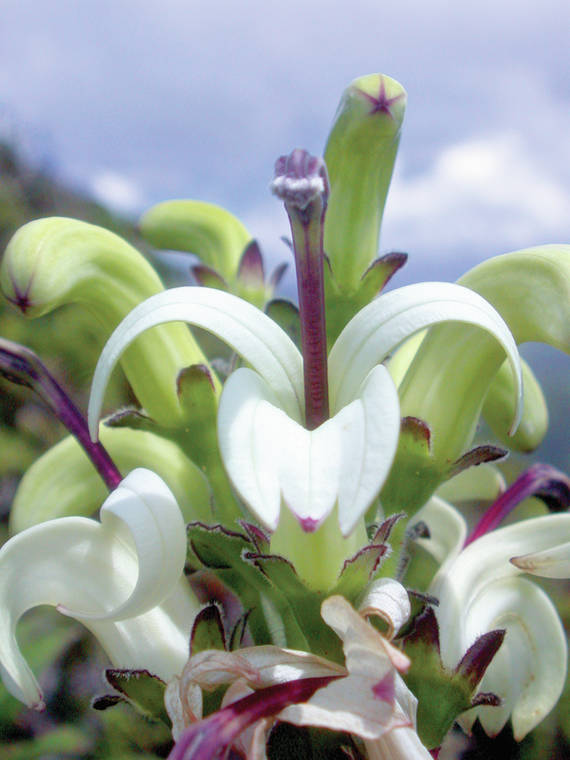
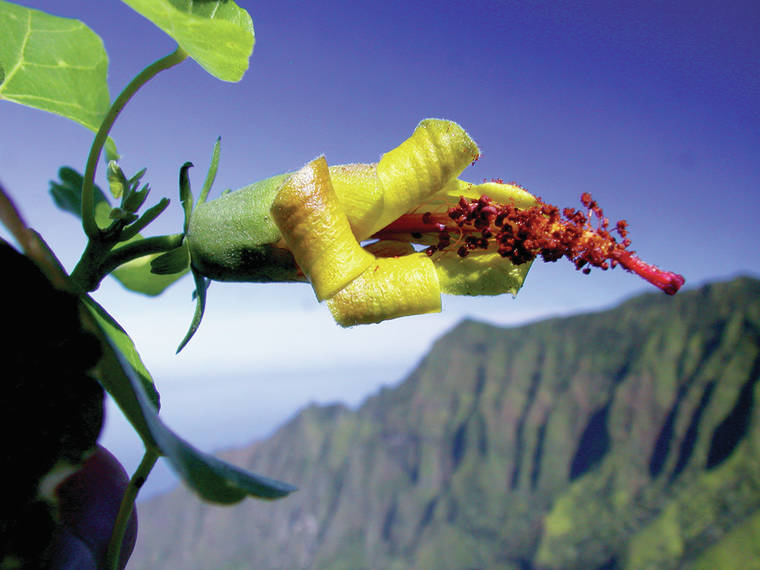

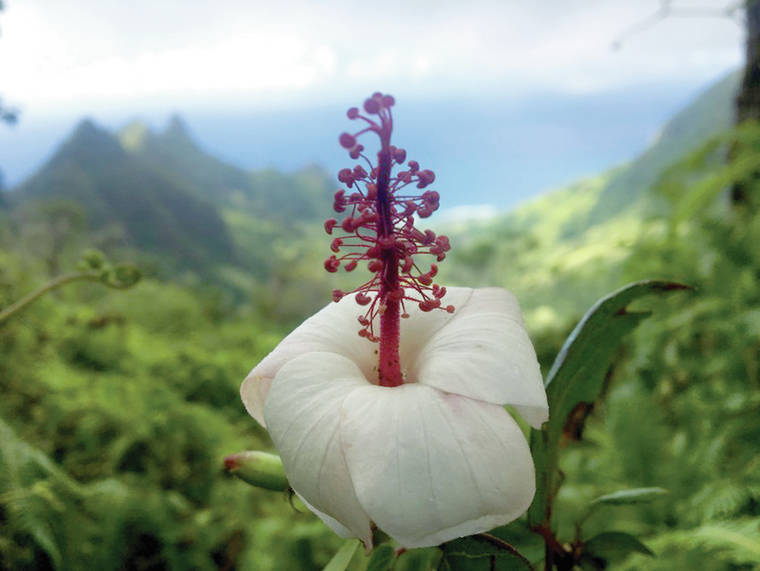

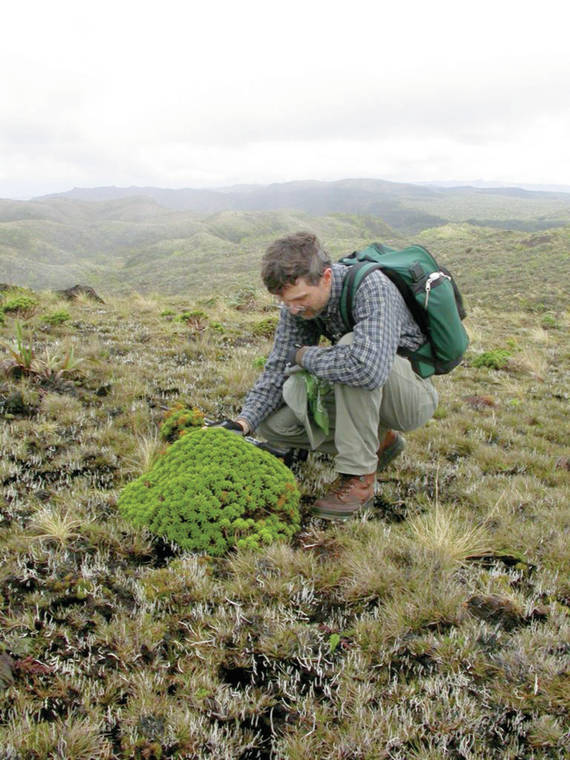
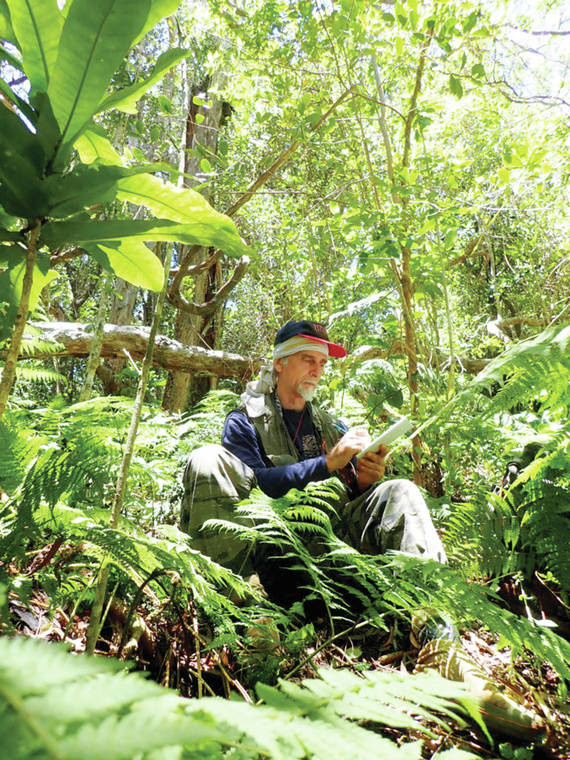




I applaud the efforts of those who take care of these wonderful plants. The NTBG is a wonderful organization with an amazing history that reaches back to our Hawaiian royalty.